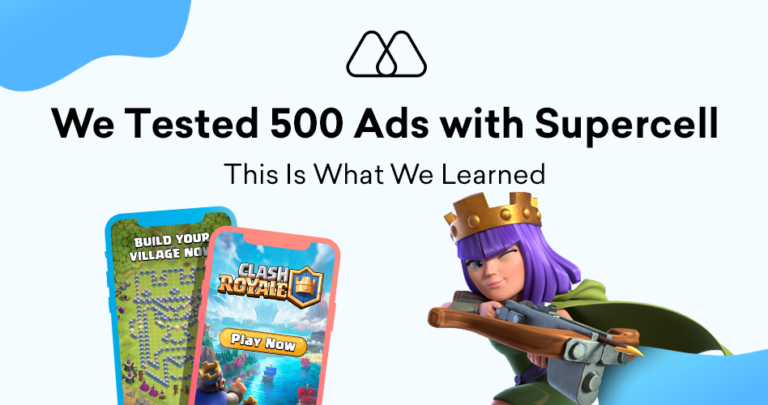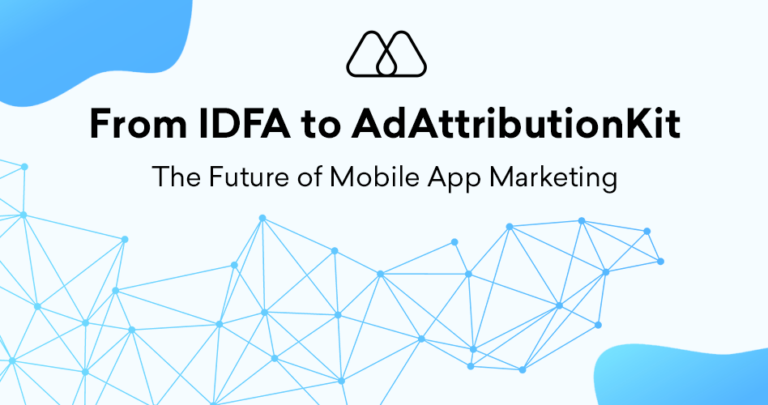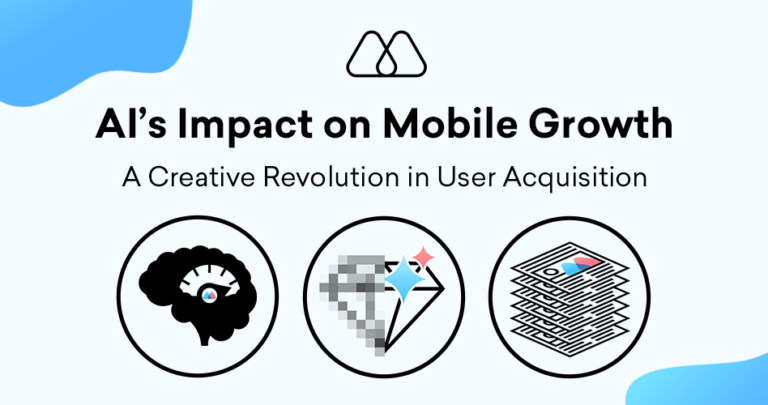The Identifier for Advertisers (IDFA) was once the golden goose of mobile advertising but is now considered the IDFA fallout. This unique identifier assigned to each Apple device empowered advertisers with the ability to track user behavior across apps and websites, enabling laser-focused ad targeting and meticulous campaign measurement. However, with the release of iOS 14.5 in April 2021, Apple fundamentally shifted the mobile advertising landscape by opting out of IDFA tracking the default setting for users. This IDFA fallout or “IDFApocalypse” sent shockwaves through the industry, particularly impacting the mobile gaming sector where user acquisition (UA) and in-app advertising are cornerstones of profitability.
Let’s delve deeper into the pre-IDFA era, explore the specific negative impacts of the IDFA fallout and its removal, and analyze how the mobile advertising industry adapts to this new privacy-centric reality.
The Pre-IDFA Era: A Marketer’s Paradise
Before the IDFA fallout, in the pre-IDFA era, advertisers reveled in a world of granular user data. The IDFA facilitated:
- Hyper-Targeted Advertising: Imagine a world where you could target your ads to users based on their specific demographics, interests, app usage behavior, and past in-app purchases. This level of detail allowed advertisers to craft highly relevant ad experiences, significantly increasing the likelihood of clicks, conversions, and eventually, a stellar return on ad spend (ROAS).
- Precise Campaign Measurement and Attribution: Attributing user actions to specific ad placements was a breeze with IDFA. Advertisers could track the entire user journey, from ad impressions to in-app purchases, allowing them to measure campaign performance accurately. This data-driven approach fueled campaign optimization and strategic budget allocation.
- Retargeting and Lookalike Audiences: Ever notice how ads seem to follow you around the internet? Thank (or blame) IDFA. Advertisers could leverage user data to retarget users who had previously interacted with their ads or app, maximizing engagement and conversion rates. Additionally, IDFA empowered the creation of “lookalike audiences” by identifying users with similar characteristics to high-value users, significantly expanding the reach of targeted campaigns.
The IDFApocalypse: A Perfect Storm for Mobile Advertising
With the IDFA fallout, the once-reliable foundation of mobile advertising began to crumble. Here’s a closer look at the specific challenges that emerged:
- Reduced Marketing Efficiency: Targeted advertising became a blunt instrument without the granular user data provided by IDFA. Reaching the correct users with the right message at the right time became significantly more challenging. This decline in targeting precision translates to lower campaign effectiveness and potential erosion of ROAS, a major concern for advertisers across all industries.
- Skyrocketing Targeting Costs: As targeting becomes less precise, advertisers are forced to cast a wider net, potentially reaching a larger pool of irrelevant users. This broader reach often translates to higher costs as advertisers must spend more to contact the same number of relevant users. This targeting cost increase strains marketing budgets, especially for smaller app developers and gaming companies with limited resources.
- Limited Campaign Measurement and Attribution: Attributing conversions and measuring campaign performance becomes a herculean task without IDFA. The lack of user-level data makes it difficult for advertisers to understand what’s working and not working, hindering campaign optimization efforts and strategic budget allocation.
- Erosion of User Personalization: Targeted advertising often goes hand-in-hand with a more personalized user experience. Pre-IDFA, apps and games could tailor content recommendations, in-app experiences, and advertising based on individuals’ user preferences. With the limitations on user-level data, this level of personalization becomes a challenge. Imagine a world where every mobile game ad you see is for a generic match-3 puzzle game, regardless of your gaming preferences. It’s not exactly an engaging user experience, don’t you agree?
The Gaming Industry Feels the Pinch: IDFA Fallout Impact on P&L
For the mobile gaming industry, the IDFA Fallout is a significant blow to the bottom line. Here’s a breakdown of the specific challenges faced by game developers:
- Soaring User Acquisition Costs: Mobile game developers invest heavily in UA to acquire new players. With less effective targeting, attracting high-value players becomes a more expensive proposition. This translates to a higher cost per install (CPI) and a potential strain on already stretched UA budgets.
- Declining In-App Advertising Revenue: Many mobile games rely on in-app advertising as a revenue stream. However, with less effective ad targeting, the value of ad inventory within games may decrease. This translates to lower revenue for game developers from in-app advertising, impacting their profitability.
- Disrupted In-App Monetization Strategies: Many popular mobile games utilize freemium models with targeted advertising to incentivize in-app purchases. For instance, a game might offer bonus items or exclusive content in exchange for watching an ad. Without effective ad targeting, these monetization strategies become less effective, potentially leading to a decline in overall game revenue.
Navigating the Post-IDFA Landscape: A New Era of Adaptation
While the IDFA fallout presents a significant challenge, the mobile advertising industry, known for its resilience and innovation, is adapting to the new reality. Here are some key strategies that are emerging:
- Contextual Targeting: This approach focuses on the context of the app or game environment to deliver relevant ads. For example, an advertisement for a sports game could be displayed within a sports news app.
- First-Party Data Activation: Leveraging data collected with user consent offers valuable insights for personalization and informing ad targeting strategies. This data can include in-app behavior, demographics declared at signup, and preferences indicated within the app.
- Privacy-Compliant Solutions: Emerging solutions like contextual cohorts and aggregated app-level measurement provide advertisers with insights while adhering to privacy regulations. Contextual cohorts are groups of users with similar app usage behavior. Individual user data is not revealed. Aggregated app-level measurement offers insights into campaign performance for entire apps, not individual users.
- Creative Triumphs Over Targeting: In a world with less precise targeting, the quality of the ad creative becomes even more critical. High-quality, engaging, and visually appealing ad formats can capture user attention and drive conversions even in a less targeted environment.
- Prioritizing User Privacy: Building trust with users by prioritizing privacy and transparency in data collection practices is crucial in the long run. Obtaining user consent for data collection and communicating how that data is used fosters a positive user experience.
- Collaboration is Key: Stronger collaboration between advertisers and app developers can facilitate data-sharing strategies that comply with privacy regulations and optimize campaign performance. For instance, developers can provide anonymized and aggregated user data to advertisers to inform targeting strategies.
- Embracing New Measurement Solutions: New measurement solutions like SKAdNetwork (Apple) and probabilistic attribution models are emerging to provide insights into campaign effectiveness even with limitations on user-level data. SKAdNetwork allows developers to receive limited conversion data from Apple regarding app installs driven by advertising campaigns. Probabilistic attribution models use statistical methods to estimate the likelihood of a user converting based on various factors.
The Road Ahead: A Future Where Privacy and Effectiveness Coexist
The IDFA fallout has undoubtedly disrupted the mobile advertising industry. However, innovation and adaptation are key to success in this ever-evolving landscape. Here are 5 key takeaways to remember:
- Reduced Marketing Efficiency: Targeting has become less precise, requiring advertisers to find new strategies to reach the right users and maximize campaign effectiveness.
- Increased Costs: Reaching relevant users may require larger budgets, putting a strain on marketing and UA budgets, especially for app developers and gaming companies.
- Challenges in Measurement and Attribution: Attributing conversions and measuring campaign performance becomes more complex without granular user-level data.
- Impact on User Experience: Less effective personalization can lead to a less engaging user experience within apps and games.
- Creative remains Key: In a world where targeting is limited, the most engaging ads that speak to your audience are what will drive success.
By embracing new strategies, prioritizing user privacy, and fostering collaboration, the mobile advertising industry, particularly the mobile gaming sector, can navigate the IDFA fallout or post-IDFA landscape and ensure long-term success. The focus will shift towards contextual targeting, first-party data utilization, privacy-compliant solutions, and creative ad formats. While challenges exist, innovation paves the way for a future where effective mobile advertising coexists with robust user privacy protections. In the future, both users and advertisers can thrive in a more responsible and privacy-conscious mobile ecosystem.




